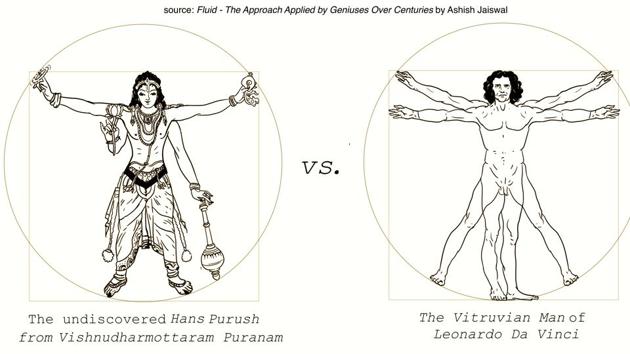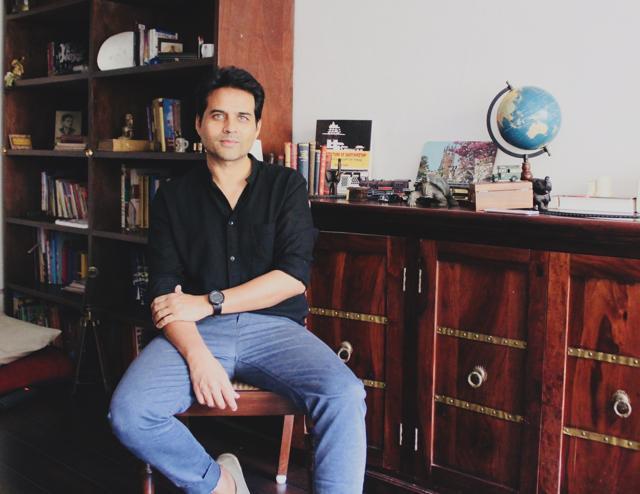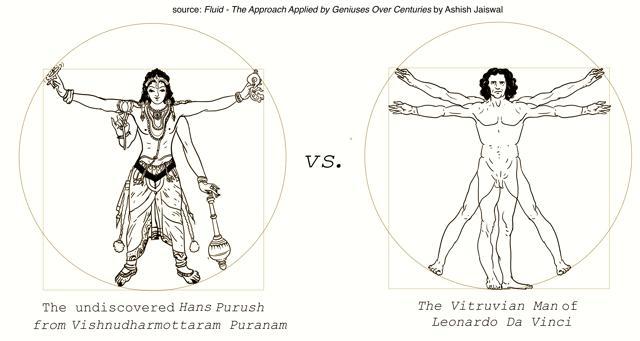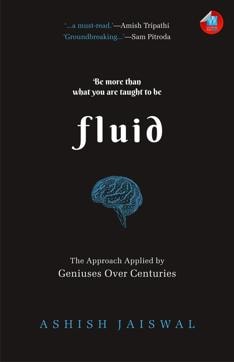This author claims that India should get credit for Da Vinci’s Vitruvian Man
Oxford scholar Ashish Jaiswal in his new book, Fluid, claims that Da Vinci’s Vitruvian Man has its origins in India.
The Vitruvian Man is one of the most famous creations by Leonardo da Vinci, along with Mona Lisa and The Last Supper. One of the most significant moments in recent times when the late artist became a talking point was after the release of Dan Brown’s Da Vinci Code (2003), which initiated its own set of conspiracy theories.
But, what if we found out that Da Vinci’s Vitruvian Man actually has its origins in India? This is exactly what Ashish Jaiswal is saying in his new book, Fluid.

Jaiswal’s Fluid confronts stereotypes ruthlessly and challenges you to embrace a new point of view, arguing that great minds who have changed the fate of humankind are actually the ones who failed and faltered. However, they didn’t remain fixed in their views, they were more, they were fluid.
During a chat with us, Jaiswal explained Vitruvian Man’s Indian connection and how he has dissected the thinking of geniuses who have shaped the world.
How did it occur to you that Leonardo da Vinci’s Vitruvian Man may have its roots in India?
As most people would know, the idea of the Vitruvian Man was not originally Leonardo da Vinci’s. A first-century-BC Roman architect and engineer, Marcus Vitruvius Pollio (popularly known simply as Vitruvius), developed the idea of a perfectly proportionate man. Hence, Leonardo named his drawing after Vitruvius. It was in his iconic book, De architectura that Vitruvius elaborates on the proportions of a perfect man.
In Fluid, I bring into the debate a not so well heard ancient Indian text that goes by the name of Vishnudharmottaram Puranam. It is fascinating to note that the puranam contains measurements of a perfectly proportionate human body i.e. it has an equivalent of the Vitruvian Man that goes by the name of Hans Purush. Given the obscurity around the dating of the puranam, there are only three possibilities: either Vishnudharmottaram Puranam took inspiration from De architectura or vice versa or both of them developed the idea totally independent of each other.

What makes this question a little more challenging is the extensiveness with which the Purana treats the idea of perfection in a human body. It has not one but five types of perfectly proportioned males and also 5 types of perfectly proportioned females.
There have been a few translations of the Vishnudharmottaram Puranam including the one from the famous early 20th century historian Stella Kramrisch. I am surprised why the ones who translated the puranam never brought up Vitruvius or Des Architectura in their commentaries.

What is your book Fluid about?
My book highlights the presence of a common thinking approach applied by great minds spread across centuries. This is particularly in the context of learning. It is their ability to cut across the flawed divisions of arts, science and enterprise; their refusal to follow the rigidity of specialisation as taught to us throughout our conventional educational journeys and also their treatment of failure as a necessary step towards path breaking ideas. I term this ability of our minds as being fluid. We all have inherent ability to be fluid; the scale depends on our commitment to keep evolving our minds.

You have questioned various stereotypes through your book. Do you have any objective for writing this book?
One of the core objectives of fluid is to address the era of artificial intelligence. I propose that fluid thinking might become a compulsory attribute for each one of us to excel in this age, irrespective of any field. However, our current educational journey is severely outdated as it is ridden with a large number of stereotypes. That reading literature is a useless activity for a science student is one such instance that I demolish in fluid.
Another is to do with the conviction with which we push our children to run the rat race of education where failure is a dreadful word whereas it is an obligatory experience if one were to push the frontiers of success.
What kind of people would like to read the book? Have you targeted any specific age bracket?
One of the first crucial juncture where understanding of inter-disciplinary fluidity is almost compulsory is when students choose their streams in schools; hence, it was crucial that fluid is written in simplest form so that it can be read by not only parents and teachers but by a 14-15 year old too.
However, the machine age is going to impact each one of us, hence, I also desired that the writing should be such that it also benefits someone like a Bollywood star, elderly professional or even a young start-up founder in understanding how fluid they are in their current thinking.






